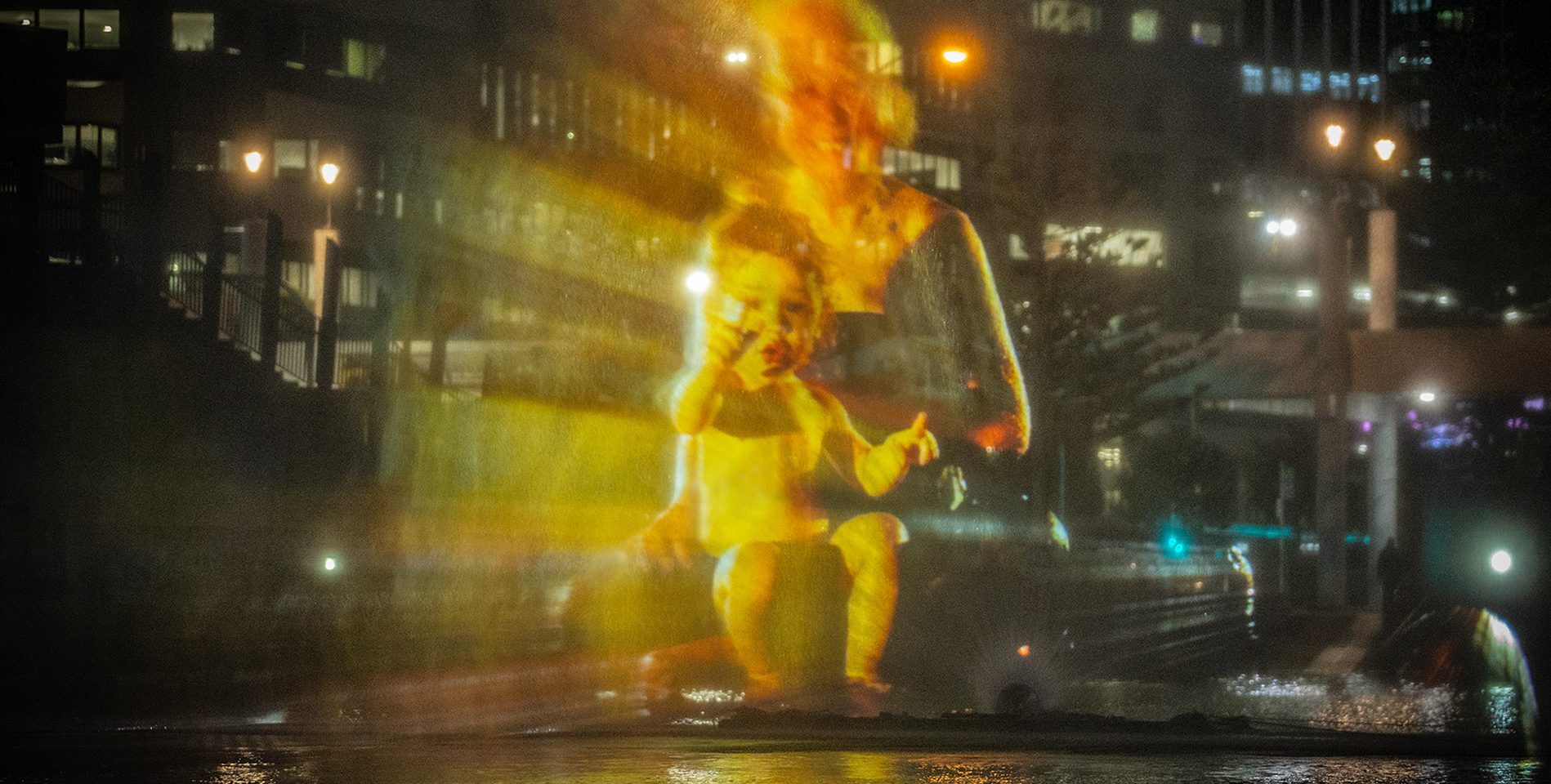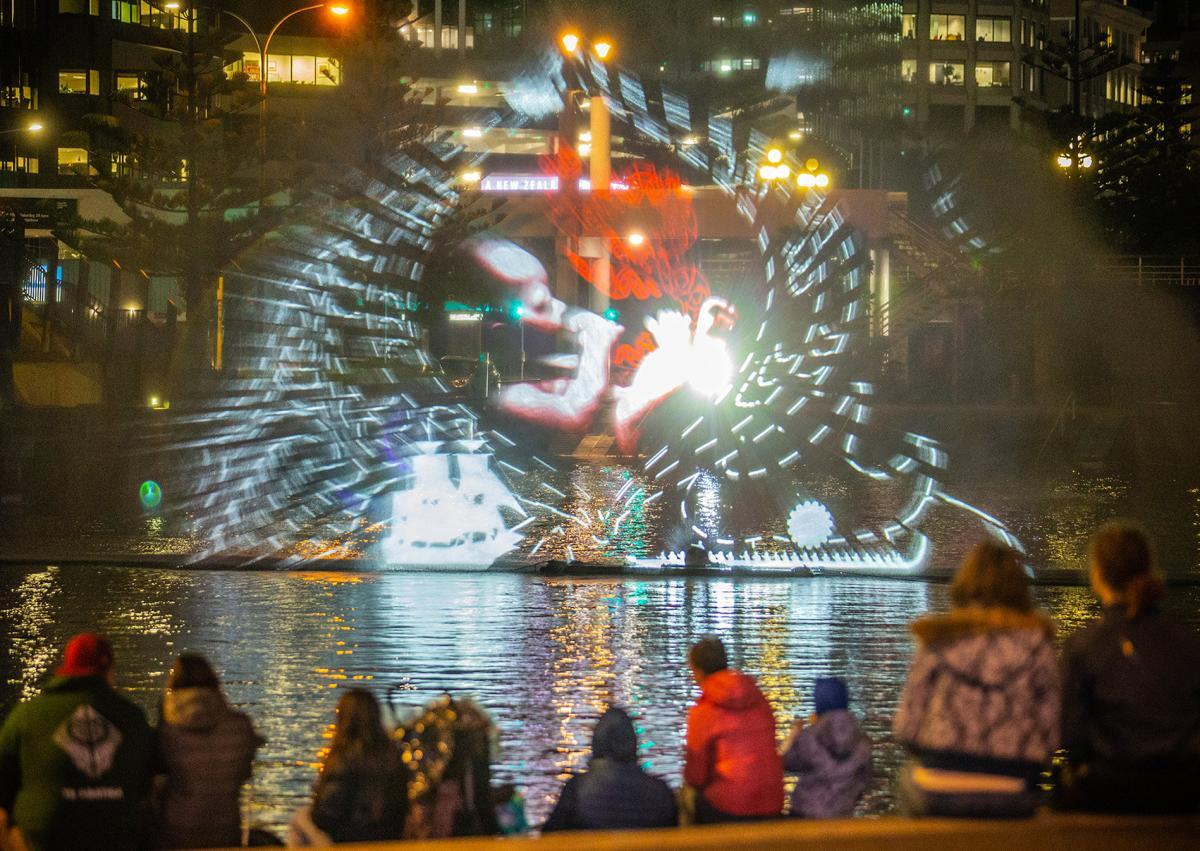
Copyright Mana Moana Collective

5th August 2020
Water flows from the source, whakapapa / genealogy springs forth. A kui reminisces with her NZ born grandchild about the place she came from, and has yet to go back to… at the water’s edge on an island in Tonga. Celebrating the relationship between tūpuna and mokopuna, This work connects generations across oceans of time and space, exploring the nuances of Pacific diaspora and Māori identity within the artist’s own whānau/family.
Ka Puna highlights the importance of family but also the role of music and singing together as a means of celebrating and maintaining culture.” (Caroline Vercoe, 2017)
Having coined the term ‘Toi Rerehiko’ to centre, claim and name digital space within a Maori paradigm, Rakena’s work describes and locates Māori digital/electronic-based art practice in terms of continuum, motion, and collaboration. She has an international exhibiting practice and her artwork has featured in major survey and retrospective exhibitions of New Zealand art, and international exhibitions.
Concept, direction & editorial: Rachael Rakena
Music: Composed by Afuha’amango, sung and recorded by Fuekafa
Performers: Lupe Fisilau & Namomo Schaaf
Director of photography: Dion O’Connor

5th August 2020
The artwork looks at the collision between the Māori and Pākehā worlds. Within the centre is a taratara element, the most powerful symbol in the Māori world. It is the place where the Māui, the powerful Māori demi-god, was crushed in his attempts to gain immortality for human-kind. In this animation the taratara draws in elements from the Māori and Pākehā worlds, carvings, sailing ships, and compasses, into the central void where everything is collapsed.
Working between graphic design, contemporary art, and toi Maori, Witehira explores how a Maori world-view and Maori narratives can be used to shape all aspects of art and design in Aotearoa New Zealand. Witehira’s particular field of research is design and tinorangatiratanga. As an expert on Maori art and design Witehira has been invited to participate in the development of art and design programmes.
Concept, animation & editorial: Johnson Witehira
Soundscape: Rio Hemopo-Hunuki

5th August 2020
In this dance Louise explores the relationship of the tinana (the human body) to the moana (ocean), and kaupapa of the movement and pathways of water through the landscape to the ocean, acknowledging our relationship and whakapapa (genealogy) to the land and the ocean.
Louise Potiki Bryant is a Ngāi Tahu, Kāti Mamoe and Waitaha choreographer, dancer, and video artist. With her artistic practice Louise aims to honour mana wahine (the intrinsic spiritual power of women), indigenous relationships with the whenua and the moana, whakapapa (genealogy), and kaupapa Māori (Māori principles and practices).
Concept, direction, animation & editorial: Louise Potiki Bryant
Director of photography: Matt Gillanders
Music: Paddy Free & James Webster
Dancer: Rosie Tapsell
Costume: Rona Ngahuia Osbourne

31st July 2020
Robyn Kahukiwa is one of New Zealand’s foremost Maori women artists living today. Robyn began painting at the kitchen table when her children were small. Her intention was to replace for them the modern stereotypes of Maori with strong role models to give Maori people in general an accessible, contemporary reflection of their culture.
Painting: Robyn Kahukiwa
Poetry: Tina Ngata, Dayle Takitimu, Michelle Ngamoki
Animation: Johnson Witehira
Soundscape: Warren Maxwell

31st July 2020
This collaborative work returns to alternative ways of moving through time and space, recalling and reclaiming ancestral philosophies of the Moana as a way forward. We have received comprehensive scientific information about the crisis of the environment at home, across the globe, under water, and in the atmosphere. It is clear that there is a direct threat of everything we depend upon no longer being able to sustain life.
Mila is of Tongan and Pakeha descent, and both her poetry and scholarship focus on the personal and political realities of Pasifika identity. Her postdoctoral research “Mana Moana” has served as the backbone for indigenous Pacific leadership programmes and wellbeing interventions. She is currently the Programme Director of the Mana Moana Experience at Leadership New Zealand.
Poetry & performance: Karlo Mila
Direction, animation & editorial: Michael Bridgman
Pattern designs: Johnson Witehira
Soundscape: Warren Maxwell

Copyright Mana Moana Collective